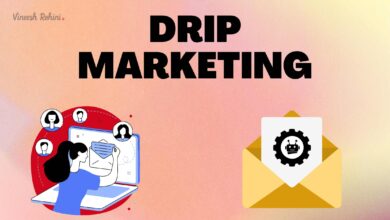LinkedIn Ads vs Twitter Ads: Which Social Media Platform is Best for Your Business?
Introduction:
Social media advertising has become an essential part of digital marketing. Two popular platforms for social media advertising are LinkedIn and Twitter. LinkedIn is a professional networking site that focuses on career development and networking, while Twitter is a microblogging site that allows users to post short messages called “tweets.” In this essay, we will compare LinkedIn ads vs Twitter ads in terms of ad formats, targeting options, engagement, conversion, and cost.
- Ad Formats:
Both LinkedIn and Twitter offer various ad formats, such as sponsored content, sponsored InMail, and display ads. LinkedIn’s sponsored content allows businesses to promote their content in the LinkedIn feed, while sponsored InMail allows businesses to send personalized messages to LinkedIn members. Twitter’s sponsored content allows businesses to promote their tweets in users’ feeds, while display ads allow businesses to promote their brand or product on Twitter’s network of websites and apps. Overall, LinkedIn ads tend to focus on B2B marketing, while Twitter ads tend to focus on B2C marketing.
- Targeting Options:
LinkedIn offers more robust targeting options than Twitter, which makes it an ideal platform for B2B marketing. LinkedIn’s targeting options include job title, industry, company size, seniority, and education level. LinkedIn also allows businesses to upload their email lists for targeting. Twitter’s targeting options include location, interests, keywords, and demographics. Twitter also offers tailored audiences, which allows businesses to target users who have already interacted with their brand.
- Engagement:
Both LinkedIn and Twitter offer engagement options, such as likes, comments, and shares. However, Twitter has a more active user base, with higher engagement rates than LinkedIn. Twitter’s engagement rates are four times higher than LinkedIn’s, which makes it an ideal platform for businesses that want to increase engagement and brand awareness.
- Conversion:
Conversion is the ultimate goal of any advertising campaign. LinkedIn and Twitter offer various conversion options, such as website clicks, app installs, and lead generation forms. LinkedIn ads are more effective at driving website clicks, while Twitter ads are more effective at driving app installs and lead generation forms. However, the actual conversion rate depends on various factors, such as the ad’s relevance, targeting, and call-to-action.
- Cost:
LinkedIn ads tend to be more expensive than Twitter ads. On average, LinkedIn ads cost between $2.00 and $7.00 per click, while Twitter ads cost between $0.50 and $2.00 per click. However, the actual cost may vary depending on the bidding strategy and the ad’s performance.
6) Best Practices for LinkedIn Ads:
When creating LinkedIn ads, there are a few best practices that businesses should follow to ensure their ads are effective. These best practices include:
- Create a compelling headline: The headline is the first thing that users will see when scrolling through their feed. It should be attention-grabbing and clearly communicate the value of the ad.
- Use high-quality visuals: Images and videos can help ads stand out in users’ feeds. They should be high-quality and relevant to the ad’s message.
- Use concise and clear copy: The copy should be easy to read and clearly communicate the ad’s message. It should also include a call-to-action to encourage users to take action.
- Test different ad formats: LinkedIn offers various ad formats, including sponsored content, sponsored InMail, and display ads. Businesses should test different formats to see which performs best.
Best Practices for Twitter Ads:
When creating Twitter ads, there are also a few best practices that businesses should follow. These best practices include:
- Use relevant hashtags: Hashtags can help ads reach a wider audience. They should be relevant to the ad’s message and industry.
- Use clear and concise copy: Twitter’s character limit for ads is 280 characters. Businesses should use clear and concise copy to communicate their message effectively.
- Use visually appealing content: Images and videos can help ads stand out in users’ feeds. They should be high-quality and relevant to the ad’s message.
- Test different ad formats: Twitter offers various ad formats, including promoted tweets, promoted accounts, and promoted trends. Businesses should test different formats to see which performs best.
Conclusion:
In conclusion, LinkedIn and Twitter are both powerful advertising platforms that offer various ad formats, targeting options, engagement options, conversion options, and cost options. The choice of platform depends on various factors, such as the type of business, target audience, advertising budget, and advertising goals. LinkedIn is more effective at B2B marketing, while Twitter is more effective at B2C marketing. LinkedIn offers more robust targeting options, while Twitter has a more active user base with higher engagement rates. Ultimately, businesses should test both platforms and evaluate their performance to determine which platform works best for their business.



